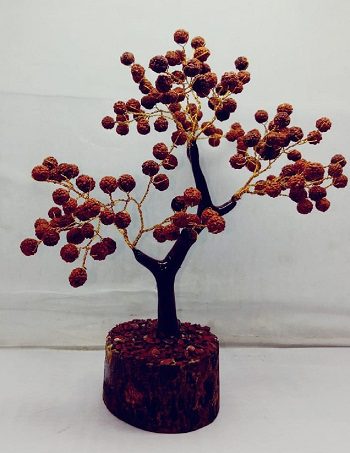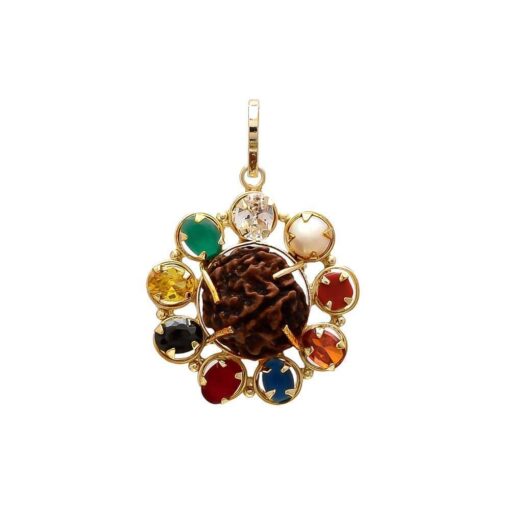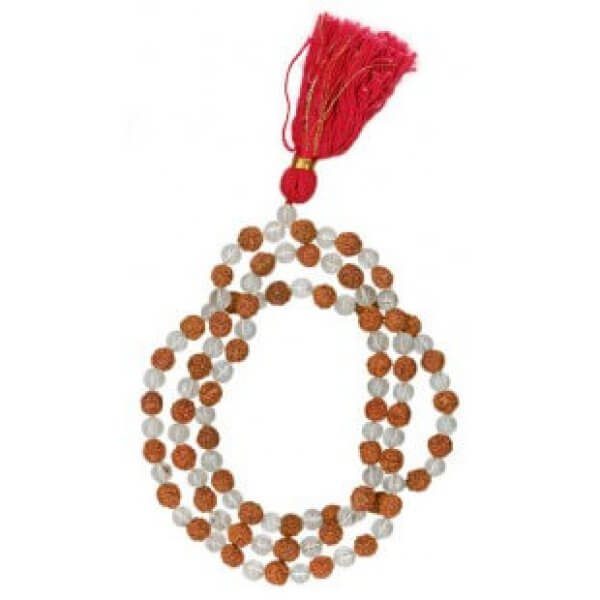Wavs
Rudraksha Bracelet
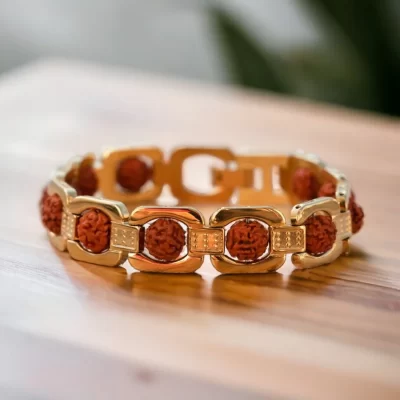
Origins and Mythological Background
The Rudraksha bracelet finds its origins in ancient Hindu scriptures and mythology, particularly associated with Lord Shiva. The word “Rudraksha” is derived from Sanskrit, where “Rudra” refers to Lord Shiva, and “aksha” means eyes. Thus, Rudraksha is often translated as “the eyes of Lord Shiva.”
According to Hindu mythology, Lord Shiva, known for his asceticism and deep meditation, was once deeply moved by the suffering of humanity. Legend has it that tears of compassion shed by Shiva upon seeing the plight of beings on Earth crystallized into seeds, which later became the Rudraksha tree. The seeds from this tree, revered for their spiritual significance, are believed to embody the essence of Lord Shiva’s compassion and wisdom.
Physical Characteristics and Types
The Rudraksha tree (Elaeocarpus ganitrus) is native to the Himalayan region and other parts of Southeast Asia. It typically grows to medium size and produces blueberry-like fruits containing the Rudraksha seeds. These seeds are round, often with a textured surface, and are naturally found in various Mukhi (faces or facets) ranging from 1 to 21 or even higher, each with its unique symbolism and benefits.
The seeds are traditionally strung together to form bracelets, necklaces, or malas (prayer beads), with each seed representing a different aspect of spiritual energy and divine connection. The most common Rudraksha bracelets are made from seeds with 5 Mukhi (faces), representing Lord Shiva himself and often used for meditation and spiritual practices.
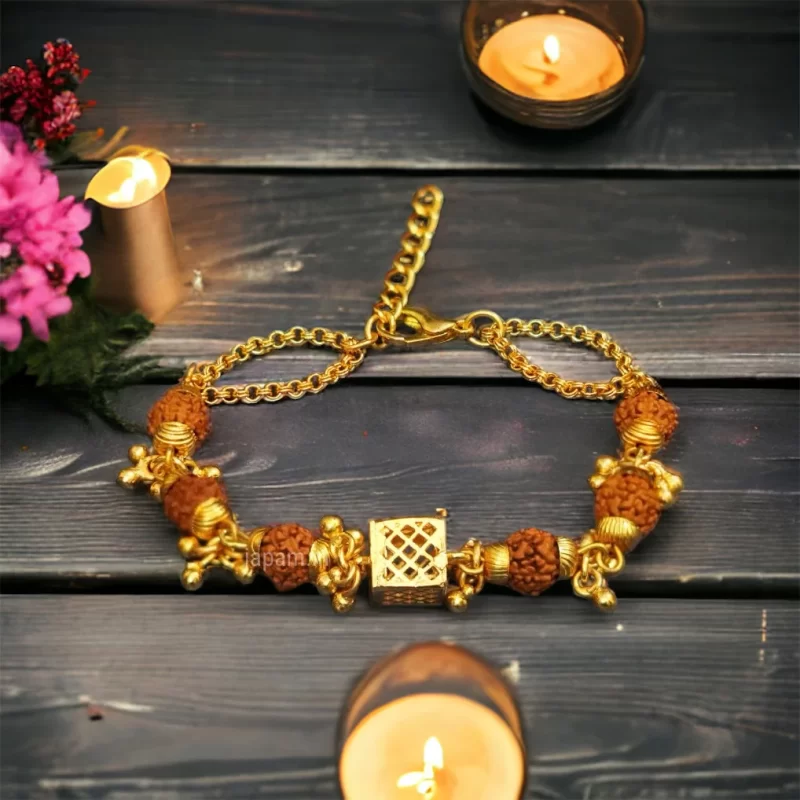
Symbolism and Spiritual Significance
The Rudraksha bracelet holds profound symbolism in Hinduism:
-
Connection with Lord Shiva: Each Rudraksha seed is believed to carry the energy and blessings of Lord Shiva. Wearing the bracelet is seen as a way to invoke Shiva’s protection, guidance, and blessings in daily life.
-
Spiritual Growth and Awareness: The Mukhi (faces) of the Rudraksha seeds symbolize different aspects of spiritual energy and consciousness. For example, the 5 Mukhi Rudraksha represents Pancha Brahma (the five forms of Lord Shiva) and is associated with enhancing overall well-being and spiritual growth.
-
Protection and Healing: Rudraksha beads are considered to have healing properties, both physical and spiritual. They are believed to balance the chakras (energy centers) of the body, reduce stress, and improve concentration.
-
Harmony and Peace: Wearing a Rudraksha bracelet is believed to create a harmonious aura around the wearer, promoting inner peace, positivity, and serenity.
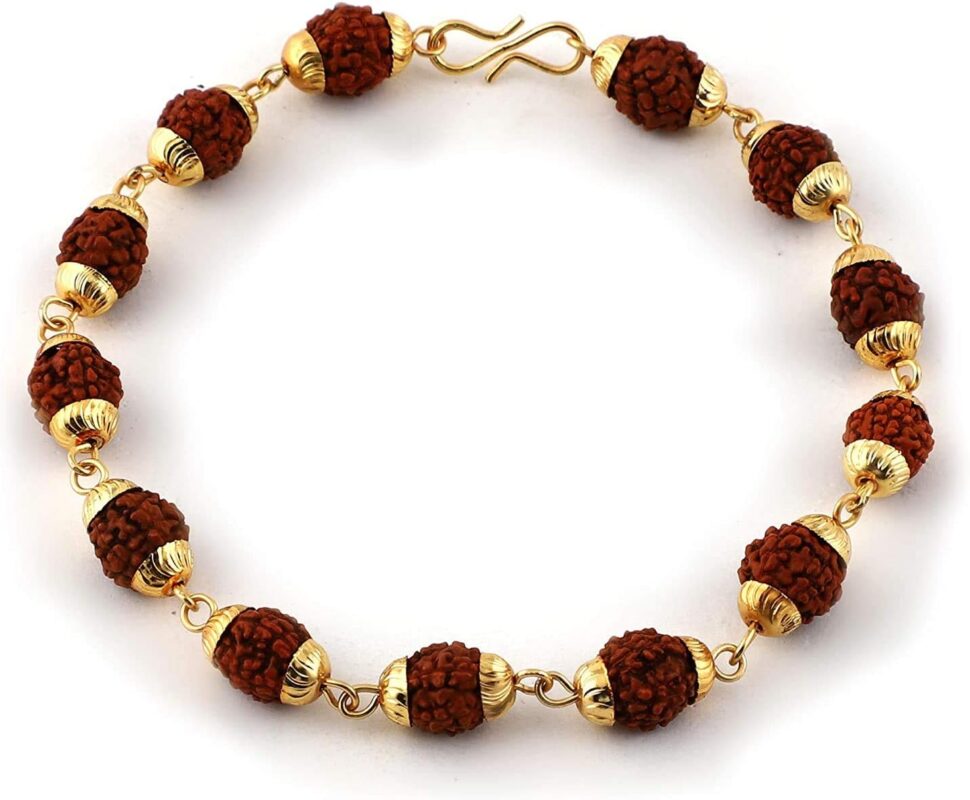
Uses and Practices
The Rudraksha bracelet is used in various spiritual practices and rituals:
-
Meditation: Many practitioners use Rudraksha beads during meditation to enhance focus and spiritual connection. Each bead is counted as mantras (sacred chants) are recited, aiding in concentration and mindfulness.
-
Prayer and Worship: Devotees wear Rudraksha bracelets while offering prayers and worship to Lord Shiva and other deities. It is believed to facilitate a deeper spiritual communion and divine blessings.
-
Astrological Remedies: In Vedic astrology, specific Mukhi Rudraksha beads are recommended as remedies for planetary afflictions or to enhance favorable planetary influences (grahas).
-
Physical Healing: Some believe that wearing Rudraksha bracelets can alleviate physical ailments such as headaches, hypertension, and stress-related disorders. The seeds are also used in Ayurvedic medicine for their cooling and calming properties.
Cultural and Global Significance
Beyond its religious and spiritual connotations in Hinduism, the Rudraksha bracelet has gained popularity worldwide for its holistic healing properties and aesthetic appeal. It is worn by individuals seeking spiritual growth, inner peace, and protection from negative energies. The global interest in Rudraksha beads has led to their incorporation into modern jewelry designs and wellness products.
In Hindu culture, Rudraksha beads are often gifted as a symbol of goodwill and spiritual support during auspicious occasions such as weddings, birthdays, and religious ceremonies. They are also worn by sadhus (Hindu ascetics) and spiritual seekers as a mark of their dedication to spiritual practices and renunciation.
Modern Usage and Trends
In contemporary times, Rudraksha bracelets are embraced not only for their spiritual benefits but also as fashionable accessories. They are worn by people of diverse backgrounds who appreciate their cultural significance and holistic healing properties. Modern interpretations include Rudraksha beads combined with gemstones, metals, and other natural materials to create stylish and personalized jewelry pieces.
Conclusion
The Rudraksha bracelet stands as a timeless symbol of spirituality, protection, and healing in Hindu tradition and beyond. Its origins rooted in ancient mythology and its continued relevance in modern spiritual practices highlight its enduring significance. Whether worn for religious rituals, meditation, or personal wellness, the Rudraksha bracelet continues to inspire devotion, inner peace, and a deeper connection to the divine energies it represents.




